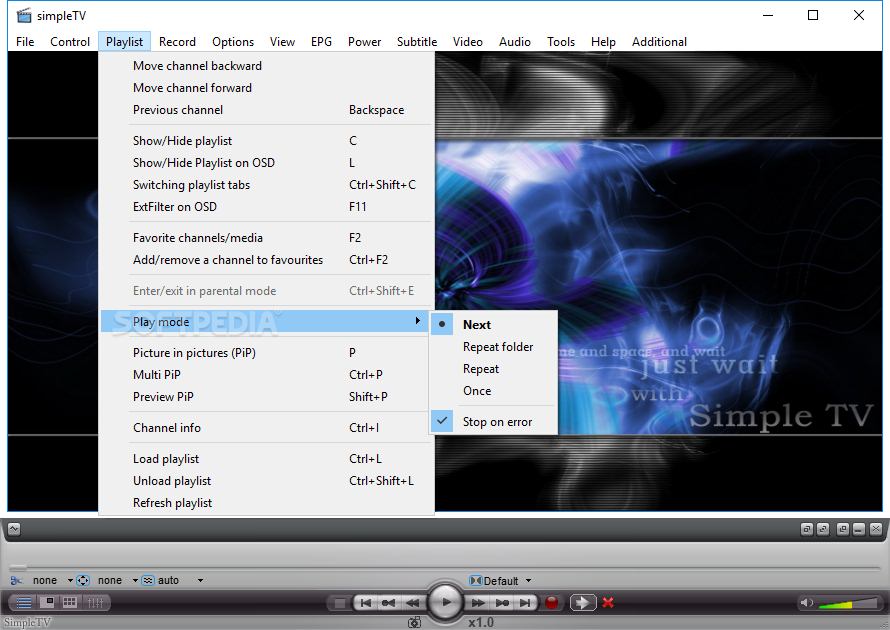Simple Tv 0 4 7 R4 Setup

Video editing is one of the most demanding tasks you can execute on a computer. A modern video-editing program such as requires high performance from the processor, RAM memory, GPU (if using GPU acceleration), as well as storage drives. Choosing a fast storage solution can be a little tougher than picking the fastest computer processor, as there are more tradeoffs involved. The largest drives aren’t always the fastest, and speeds can vary a great deal. This guide was created to help you choose the right storage drive (or drives) for your editing needs, from the small to the large.
820 records - Simple Tv 0 4 7 R4 Firmware Hot spots Hot spots Hot spots Hot spots. 1 watch x men 2 2 patek philippe watches for sale uk 20172018. How-lo USES FOR YOUR NEW MEDIA SERVER STREAM MUSIC TO YOURSELF. U AlU.p it th« Wh««l fron M V.,* r Lldiu I 2343678 9 10 0. Dreams of Our Fathers rrc~i Ev«rd«y by Cav« Matth«r4 Sand. It's that simple! If you properly configure the Beyond TV software, your system can transcode recorded.
How much bandwidth do you need? 'The first step in choosing a drive is to determine how much storage space you need, as well as how fast your data can be stored and retrieved.' The first step in choosing a drive is to determine how much storage space you need, as well as how quickly your data can be stored and retrieved. The biggest determining factor is what codec and resolution you will be editing in primarily, since the amount of space that different video codecs occupy varies widely. 1080p ProRes HQ, a popular editing codec, will set you back about 112GB an hour, whereas 1080p AVCHD only takes up about 11GB. It's also important not to confuse bits and bytes. Most codecs rate their speed in bits per second, whereas most hard drives publish their speeds in bytes per second.
XDCAM EX's 35Mb/s is actually only 4.5MB/s. A handy tool for determining the amount of bandwidth you need is the AJA DataCalc app, which is available for Windows and Mac at. Gta ra one game play. It's also available for iOS in the. This tool lets you pick the codec you will be using, and it tells you how much bandwidth a single track of that codec needs in bytes per second. Once you know how much bandwidth a single track of the codec requires, your next step is to determine how many tracks you are going to need to play back at once. If you will only be doing simple editing with some transitions and text overlays, then twice the bandwidth is probably enough.
However, if you plan on doing multi-camera cutting in real time, or using a large number of layers simultaneously, you are going to need far more. Below are a few popular codecs, as well as the amounts of bandwidth they require: • AVCHD 1080p at 30 fps - 3MB/s • XDCAM EX 1080p at 30 fps - 4.5MB/s, • ProRes 422 1080p at 30 fps - 21MB/s • ProRes HQ 4K at 24 fps - 106MB/s Single 3.5' drives If you will be editing HD content without a huge number of tracks, then a high-performance 3.5' drive will probably be fast enough to meet your needs. Current high-end 7200 rpm 3.5' drives are able to reliably deliver speeds at 150MB/s or higher, in capacities as high as 4TB, which is enough to play back numerous tracks of lightly compressed video, such as DnxHD or ProRes.
Some recommended 3.5' drives are the, the, or the. All of these drives should give you at least 150MB/s of sustained transfer speed for video editing.
4TB Western Digital Caviar Black 3TB Seagate Barracuda 4TB Hitachi Deskstar Lower-performance 3.5' drives (or 2.5' drives) are not recommended for video editing, even if their published speeds are fast enough. These kinds of drives are often not designed to sustain those speeds. If 150MB/s isn't enough, and you still prefer using a single drive, the is a good choice. It is a 10,000 rpm 2.5' drive on a large heat sink designed to fit into 3.5' drive bays. While the capacity isn't as high as full-size 3.5' drives (it maxes out at 1TB), it's still larger than most SSD drives and can reliably deliver speeds of around 200MB/s. Solid-state drives SSD drives have a reputation for being much faster than hard-disk drives.
Aside from speed, their main advantage is their near-instantaneous seek times, as well as their ability to read many small files at nearly the same speed as one large file. This is excellent for storing operating systems and programs, as they often require accessing large numbers of small files.
However, for video editing, what you really need is a sustained transfer rate, and while SSDs are still faster than hard drives for this, it's not by as much you may have thought. A high-end SSD will give you around 400MB/s sustained transfer speed, though at a vastly higher price per GB than a hard-disk drive. If money is no object, or if you don't need that much storage space, then SSDs are great. Otherwise, if you need more speed than a single hard drive can deliver at a more reasonable price per GB, then RAID drives can be a great fit. External drives If you don't have space in your computer for internal drives, then you will need to use an external drive. External-drive performance is determined by two factors.